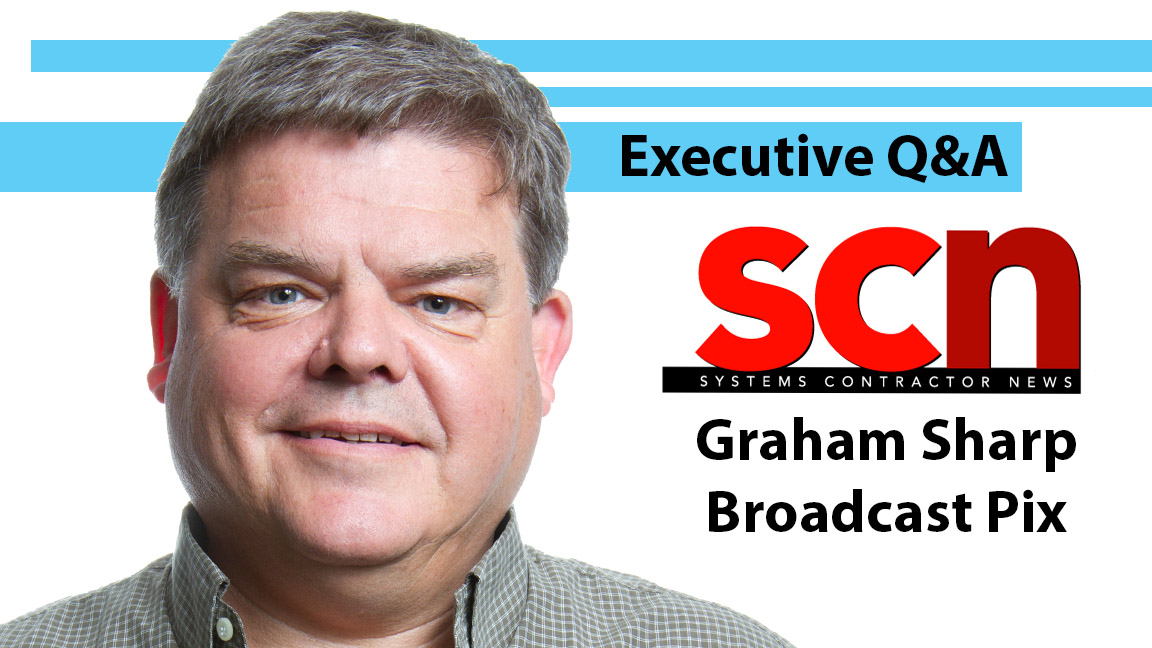Executive Q&A: The All-In-One Advantage
CEO Graham Sharp celebrates as Broadcast Pix turns 20 and the company transforms its product line to software-based solutions.

SCN: How is Broadcast Pix celebrating its 20th anniversary?
GS: We are still pretty much working remote as a company, so internal celebrations were somewhat subdued. However, it was a huge year for us as we transformed our complete product line to be software only, running on consumer-off-the-shelf (COTS) technology. This also enabled us to create focused versions for market verticals, such as RadioPix, ChurchPix, MeetingPix, and StreamingPix.

SCN: What are the advantages of an integrated production system?
GS: Obviously, a big advantage is that everything you need is "in the box"—but having an integrated toolset brings huge operational advantages, primarily around ease of use and control. The tools are fully integrated into a single, easy-to-operate user interface, which can then be fully automated. These levels of control and automation cannot be achieved with individual production components.
[Executive Q&A: All the World's a Stage]
SCN: With so much touchscreen functionality in today's production workflows, is there still a demand for traditional control panels?
GS: I would say yes—a touchscreen is fine for setup, but operators still love a tactile surface or control panel when they are producing a live show or event. Part of our success historically was our 'hybrid' control surface, where we combined visual menus with buttons, so watch this space as we work on our next-generation control surfaces.
SCN: There are a lot of built-in features in your systems, but what's the one that customers tell you they love the most?
A daily selection of the top stories for AV integrators, resellers and consultants. Sign up below.
GS: I would say ease of use and configurability. We have 20 years' worth of feature development, so everything you can think of, but making those features easy to find and intuitive to use is our real advantage and customers love it!
[Executive Q&A: No Name Change for Covid, Inc.]
SCN: How has cloud technology impacted your systems?
GS: We probably facilitated one of the earliest remote productions about 12 years ago, when we worked with Swedish Television to remotely produce their soccer league. In that case, the production systems were in a data center and the cameras were remote. Today, our systems are software-based, have an abstracted network architecture, and can easily run in the cloud.
We have a very deep toolset which we have been developing for 20 years, so now our focus is improving ease of use with next-generation control and more automation.
So, it's not a technical issue, it's more of a financial one. The cloud can work out to be very expensive for constant and intensive CPU usage—and high-bandwidth streaming of the result. It is much more cost effective to run the software on a dedicated server or in a private data center.
We have been running a PoC for some time at a cathedral in Maine, where the software is hosted in a data center, the cameras remotely network in via the internet, and the producer switches the show from the congregation using an iPad—connected again to the public internet. I truly believe this is the future.
SCN: Is visual radio (finally) gaining more traction in the United States, and how can Broadcast Pix help integrators deliver a solution?
GS: Yes, I think visual radio is finally getting traction. Our goal with RadioPix is to make it easy to buy, install, configure, and operate. It comes with everything in the box, preconfigured and ready to go. We have tried to make it as plug-and-play as possible. In terms of operation, we include a behavioral intelligence module where cameras can be controlled by a set of rules based on microphone activity. I like to describe the "boredom" macro—if someone talks for longer than a couple of minutes, the camera is triggered to pull back, switch to the second camera, zoom in, and throw up a graphic to keep the content dynamic and interesting.

SCN: People know you for your integrated production systems, but what are some of the other products Broadcast Pix offers?
GS: We focus on IPS, that's in our blood. Of course, we provide cameras and now we have a range of appliances for specific markets, but our DNA is integrated production systems—total focus.
[Executive Q&A: All About Interoperability]
SCN: What new initiatives are we likely to see from your company?
GS: We have a very deep toolset which we have been developing for 20 years, so now our focus is improving ease of use with next-generation control and more automation.
SCN: Where do you see the Pro AV industry heading?
GS: We see AV rapidly merging with broadcast. COTS and networks have become powerful and fast enough to process high definition, high-quality video, so we can have the best of both worlds at a competitive price—the quality and standards of broadcast and the networking expertise of AV.

Mark J. Pescatore, Ph.D., has been the content director of Systems Contractor News since 2021. During his career, he's hosted and programmed two ongoing regional industry trade shows (including Future B2B's AV/IT Summit), produced and hosted podcasts and webinars focused on the professional video marketplace, taught more than a dozen college communication courses, co-authored the book Working with HDV, and co-edited two editions of The Guide to Digital Television.
